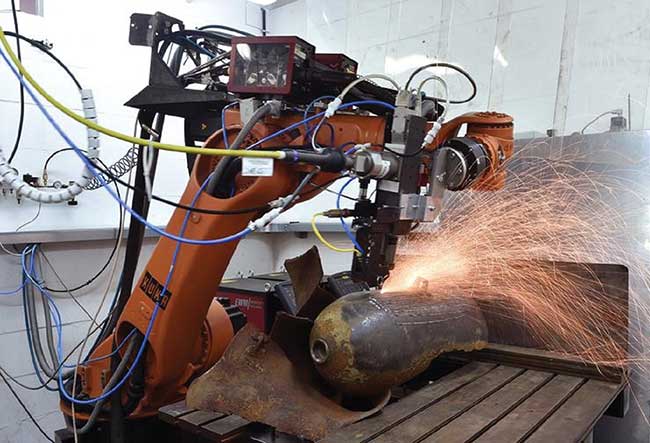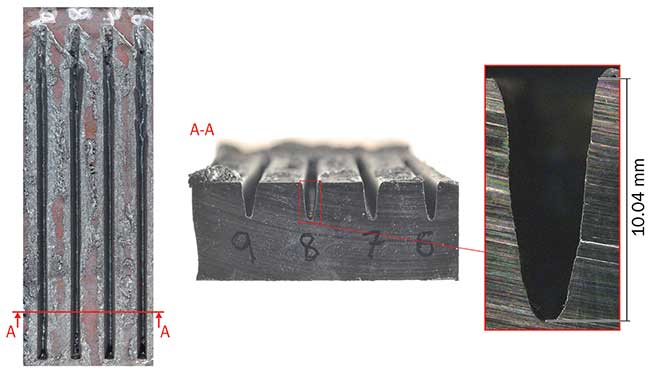There are some buried relics better left untouched. Seventy-five-year-old duds, or unexploded bombs, fall into that category. There are an estimated 60,000 tons still buried in the ground in Germany, according to the Hamburg fire brigade’s bomb disposal unit (KRD/Kampfmittelräumdienst der Feuerwehr).
Conventional defusing methods come with many challenges and dangers. There is an extremely high risk of unwanted detonation, especially in complex ignition systems. Blowing up the dud is often a last resort.

With a laser-based process, the deactivation of unexploded bombs is to become safer.
There is a need to deactivate these bombs safely. To do this, KRD has been joined by two other German companies — Laser Zentrum Hannover e.V. (LZH) and LASER on Demand GmbH — on a laser-based defusing project known as DEFLAG.
In the DEFLAG project — Safe Deflagration of Duds by Laser Technology — LZH and LASER on Demand are creating a procedure that uses a 2-kW fiber laser to defuse the bombs by targeted deflagration.
Christian Hoff, head of additive manufacturing at LZH, told Photonics Media that in contrast to a detonation, a lower-pressure wave is created during deflagration and the explosive is converted only to a small extent.
“The project partners notch the bomb casing with a combined melting and ablation process,” Hoff said.

Steel sheets 25 mm thick with laser-ablated notches.
This laser ablation stage uses a mobile, automated laser system to create a grooved notch along the length of the unexploded bomb, weakening its case.
“During the development of the process, we closely monitor the temperature at the bottom of the casing,” Hoff said. “We use an external gas supply to remove the molten metal.”
Maintaining a critical temperature limit on the lower surface of the material, driving out material from the ablation groove, and ensuring process mobility are all crucial. Scientists at LZH have so far been able to put notches in 25-mm-thick steel sheets using a combined melting and flame-removal process. In doing so, they achieve an ablation depth of up to 16 mm with an external gas supply.
The DEFLAG project is targeted toward duds with complex and long-term detonators.
“The work on the duds with these complex detonators is highly risky for the personnel on the ground,” Hoff said. “Surrounding buildings can be damaged by the detonation. Usually the duds are found in highly populated inner-city areas.”
It is estimated that of the 1.3 million tons of bombs dropped during World War II, somewhere between 12 percent and 24 percent were duds. Only about half of these have subsequently been cleared.
Researchers in the DEFLAG project will begin experiments in the field with explosive material in the next couple of months, working on sheet metal at first. The partners will start work on actual bombs in early 2019, with the hopes of eventually being able to securely defuse duds in Germany and other countries.
The DEFLAG project is being funded by the German Federal Ministry of Education and Research within the scope of the German federal government’s “Research for Civil Security 2012-2017” program. KRD is the associated partner.
In cooperation with KRD, LZH and LASER on Demand hope to develop a field-compatible and automated processing platform to safely defuse dangerous unexploded bombs, not just duds.